What’s The Buzz About Bees?
August 31, 2021
Did you know that we just passed an International Holiday? This Saturday was World Honey Bee Day! It’s a day to celebrate bees, beekeepers, and all things honey. It gives us all a great chance to learn about these magnificent creatures, what they do for us, and how we can help them.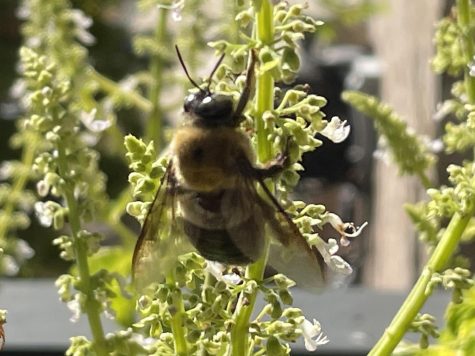
World Honey Bee Day is always on the third Saturday of August. That means that this year it was on Saturday, August 21. We celebrate World Honey Bee Day to raise awareness about the honey bees’ hard work and the beekeepers who help take care of them. The holiday is a good excuse to buy honey locally and support your local bee farmers. It also gives us a good chance to learn all about our favorite pollinators, what we can do to help them feel safe and thrive, and why they’re so important to us and the world around us.
Bees are super important to the environment, and Mr. Tipton from the agriculture department helped teach about that. Most people know that bees play a big part in the pollination of our environment. Pollination is what happens when bees pick up pollen and spread it by flying to a different location. Mr. Tipton explained that without pollination, most plants wouldn’t be able to reproduce, meaning that the species of the plant would eventually go extinct. As he says, “Taking a look at wildflowers, everybody enjoys country rides and without the bees and the pollinators, the wildflowers wouldn’t be there for us to see and enjoy.” According to the FDA, there are around 250,000 species of flowering plants and more than 90 crops that depend on the bees. This includes all kinds of wildflowers, orchards, fruits, vegetables, and more. While pollen can be transferred many different ways, bees are the top pollinators. According to the U.S. Food & Drug Administration, an average-sized colony of around 20,000 bees collects an average of 125 pounds of pollen in a year. Without the bees helping flowers and plants reproduce, the plants would die, causing the insects and animals that depend on those plants as a food source to die. If all of those insects and animals went extinct, then it could lead to their predators also dying. Eventually, it would all end in a mass downfall in the numbers of animals and plants in places where we would typically find bees.
We also rely on bees as a big food source. Bees are best known for how they make honey which supplies themselves and others with a food source. According to the U.S. Food & Drug Administration, in 2019 honey bees made around 157 million pounds of honey. If you were selling that you could make over $339 million. Bees
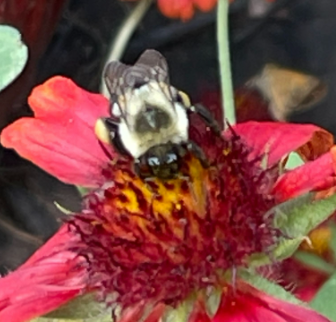
make enough honey to not only supply themselves with food but also feed insects, birds, and any human who stirs it in with their tea. Honey is great because it provides benefits in almost every way, from digestive health to skincare to hair health to soothing wounds and sore throats. On top of honey, honey bees produce beeswax, royal jelly, propolis, and venom, which can all be used for medicinal and nutritional purposes. Beeswax alone is used to make leather and wood polishes, artists’ materials, candles, cosmetic supplies, and even in the pharmaceutical world.
Bees also help the environment by building homes not only for themselves but also for other insects and birds. Many people think that bees live solely in trees, but around 70% of bee species live underground. After bees move out of hives and nests, other insects move right in. If you want to make your own homes for bees, you can by drilling holes of different sizes into dead trees.
Bees cause lots of biodiversity because of the massive effects they have on the environment simply by spreading pollen. Their simple act of pollination helps flowers, animals, trees, fruits, vegetables, and more. If we didn’t have bees, we wouldn’t have certain foods or creatures and our environment would be a lot barer with fewer plants, animals, and crops.
All of this talk about bees going extinct leads you to think, ‘why is it that we need to help the bees now more than ever? Has there recently been a rapid decrease in the number of living bees?’ There’s a couple of factors that are leading to the decrease of bees which, on their own, might’ve been handled better, but since there is so much going on, the bees are stressed out. Many species of bees have already become locally extinct meaning that that species has become extinct in an area where they used to have a lot of the species, but part of that species is alive somewhere else. A big reason for the downfall of bees is global warming. Due to global warming, bees are having to experience temperatures and climates that they’ve never had to before and oftentimes it’s too much for them. Bees do better in colder weather, but out of the past 139 years that the U.S. National Oceanic and Atmospheric Administration has tracked heat, the last six years have been the hottest recorded. The bees can overheat or they can starve after plants die from the heat.
The bees are also affected by many pesticides, like neonicotinoids, which are very toxic to their health. Their fragile bodies can’t handle the intense chemicals given off by the pesticides. We also lose many after we destroy their habitats. We turn open woodland into residential or agricultural land and then kick the bees out with nowhere to go. You can help them find new homes by leaving untouched areas in your garden specifically for them. They’re also killed when we release non-native species of bees to an area where there are already bees. The non-native bees will kill the natives by stealing their food and habitat resources. Pathogens, or microorganisms like viruses or bacteria that spread diseases, are also the killer of lots of bees. 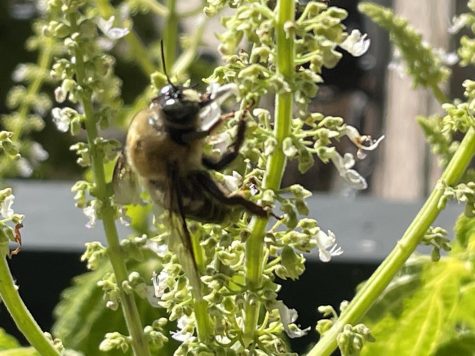
So what do we do to stop their extinction and save the bees? An easy way is supporting your local beekeepers by buying locally grown honey and bee products. There are all kinds of products that beekeepers make with the help of bees that you can buy such as beeswax, lotions, soaps, and candles.
You can also create a garden just for bees by planting flowers and other plants rich in pollen and nectar. It doesn’t have to be a super huge garden, window boxes and planters work just fine. You can get in contact with your local government to see if you can plant in public spaces in your community. Bees like bright colors, so make sure something is always in bloom no matter the season. Some of their favorite plants are lavender, blue borage, marjoram, abelia, pussy willow, crocus, lilac, foxgloves, monarda, and chives. Try to get all different forms of native plants to encourage biodiversity.
On top of flowers, bees need trees! To stop the extinction of bees you can help climate change (which will, in turn, help the bees) by planting trees and creating parks in urban environments. Trees provide lots of nectar for the bees because of all the blossoms they provide. Trees also make nice homes for many bees. Not only would you be helping the bees, but also the rest of the environment! Trees are essential for our world and provide for so many living things in it. With deforestation on the rise, there is no such thing as too many trees.
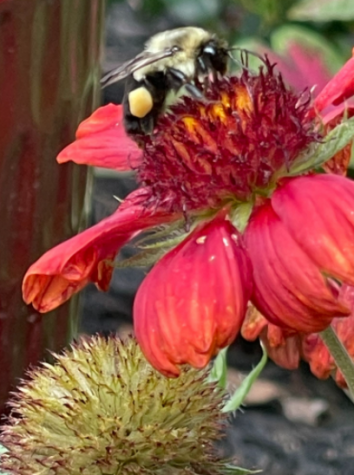 An easy way to help the bees is by helping out local beekeeping or environmental groups by donating money, your time, or any other resources they might require. You can host a fundraiser or donate money to a fundraiser that uses all its funds for helping the bees.
An easy way to help the bees is by helping out local beekeeping or environmental groups by donating money, your time, or any other resources they might require. You can host a fundraiser or donate money to a fundraiser that uses all its funds for helping the bees.
Help by creating a bee bath! It’s just like a birdbath, but for our favorite yellow insects. Bees want to be able to take a nice, refreshing sip of water. You can do this by filling an empty bowl or birdbath with clean water. Put some stones and pebbles in there that the bees can sit on while they rest.
Since chemicals in pesticides can be harmful to bees, try not to treat your yard or garden with synthetic herbicides, pesticides, or fertilizers. Instead, you can use organic substances like compost to help your soil become healthy. Instead of using strong chemicals to get rid of pests, you can introduce helpful insects like ladybugs and praying mantises. On top of that, not buying mulch helps out not only your wallet but also the bees. A big portion of bees build their hives and homes in the ground and mulch can interfere with their ability to do that.
The easiest way to help the bees is to just spread the word about what’s going on. Try to teach those around you about how they can help and what we can do to stop the extinction of bees. Education is a powerful tool that can be put to work in many different ways.
If you missed out on Honey Bee Day, don’t worry because you won’t h

ave to wait a full year for another bee day! This is because World Bee Day is celebrated on the twentieth of May every year. It is celebrated on this date because back in 1734, this was the day that Anton Janša was born in Slovenia (a place where beekeeping is taken seriously and has the unofficial motto “land of the good beekeepers”) and he is known to be a pioneer of beekeeping. He designed a new beehive style, wrote books all about apiculture, established the difference between queen bees and drone bees, improved techniques for the production of certain kinds of honey, and even found ways to combine his artistic abilities with his love of bees since he was also a painter. It’s also celebrated in
May because in June and May the pollination is the best in the Northern hemisphere, while in the Southern hemisphere it’s time to harvest honey and bee products. That’s also why June is National Pollinators Month.
In closing, bees are super important to us and our environment. Even though their numbers are dropping, there are tons of ways we can try to help them. So remember to save the bees, plant some trees, and please don’t sneeze (we’re in a pandemic, people).
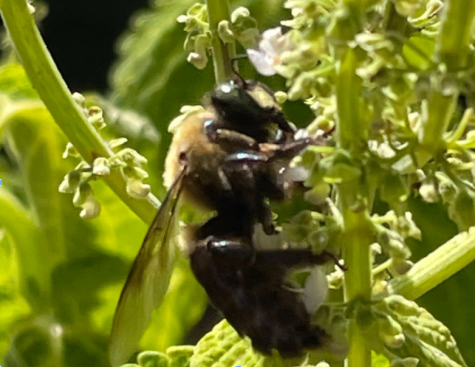
R. Tipton, Greenwood Agriculture Department, August 24, 2021
U.S. Food And Drug Administration (2018, July 30). Helping Agriculture’s Helpful Honey Bees .https://www.fda.gov/animal-veterinary/animal-health-literacy/helping-agricultures-helpful-honey-bees
National Geographic (2020, February 6). Bumblebees are going extinct in a time of ‘climate chaos’.https://www.nationalgeographic.com/animals/article/bumblebees-going-extinct-climate-change-pesticides
World Meteorological Organization (2021, January 15). 2020 was on of three warmest years on record.https://public.wmo.int/en/media/press-release/2020-was-one-of-three-warmest-years-record#:~:text=The%20warmest%20six%20years%20have,2020%20being%20the%20top%20three.
The Bee Conservatory. Ten Ways to Save the Bees. https://thebeeconservancy.org/10-ways-to-save-the-bees/
National Geographic (2015, May 24). 9 Ways You Can Help Bees And Other Pollinators At Home.https://www.nationalgeographic.com/animals/article/150524-bees-pollinators-animals-science-gardens-plants
Eco-Age (2019, September 3). 10 Best Plants to attract bees.
https://eco-age.com/resources/10-best-plants-attract-bees/
National Day Calendar (2013-2021). WORLD HONEY BEE DAY. https://nationaldaycalendar.com/world-honey-bee-day-third-saturday-in-august/
Bee Our Guest. Anton Janša. https://www.beeourguest.eu/anton-jansa/
National Day Calendar (2013-2021). WORLD BEE DAY. https://nationaldaycalendar.com/world-bee-day-may-20/


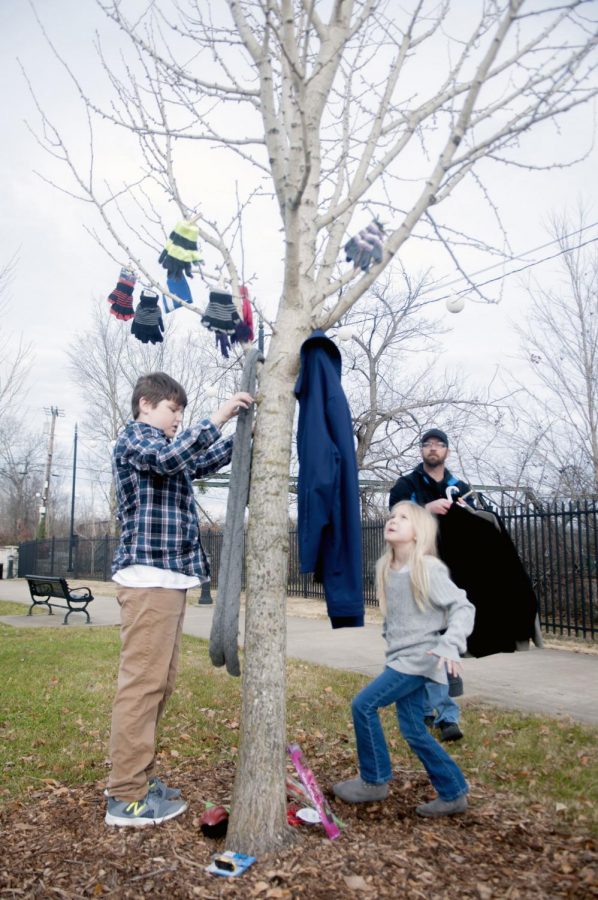
Kaitlyn • Sep 7, 2021 at 1:49 pm
Very well put together! Great job dory!
Ella • Sep 2, 2021 at 3:00 pm
Very informational, I like the jokes